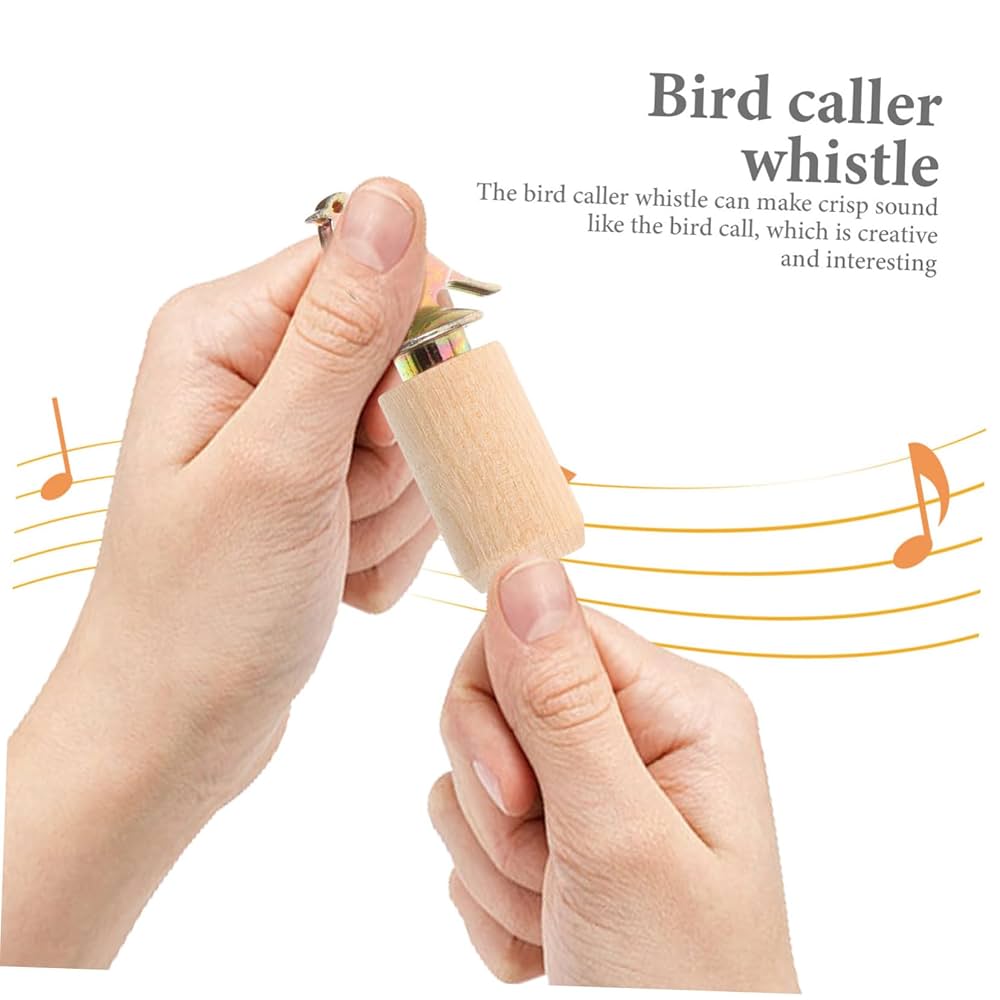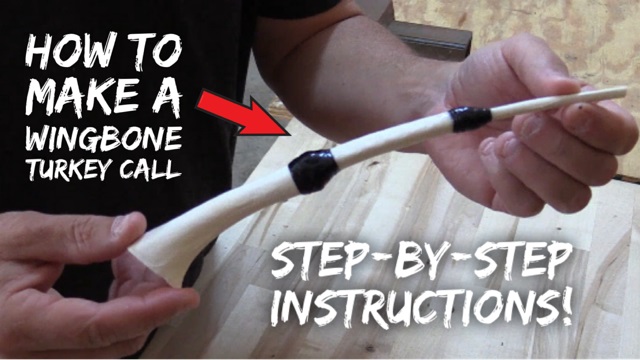Have you ever been on a nature walk and wished you could communicate with the birds around you? Knowing how to make a bird call with your hands can be your secret tool to connect with nature in a unique and fun way.
Imagine the thrill of hearing a bird respond to your call, or the joy of showing off your new skill to friends and family. This simple yet fascinating technique isn’t just for bird watchers; it’s for anyone who wants to bring a bit of magic into their outdoor adventures.
You’ll learn the step-by-step process to master this art. Get ready to impress and engage with the world around you, one bird call at a time.

Credit: www.amazon.co.uk
Basics Of Bird Calls
Bird calls are simple sounds birds use to communicate. These sounds can signal danger, attract mates, or mark territory. Learning the basics helps you mimic these calls with your hands effectively. Understanding the types of bird sounds and the right moments to use hand calls makes your practice more fun and successful.
Types Of Bird Sounds
Birds make different sounds for various reasons. These include:
- Chirps:Short, sharp sounds to get attention.
- Whistles:Clear, musical tones to attract mates.
- Trills:Rapid, repeated notes showing excitement.
- Calls:Simple sounds to warn or communicate.
- Songs:Complex melodies for marking territory.
Each sound has its own pattern and pitch. Your hand calls should match these to sound natural.
When To Use Hand Calls
Hand calls work best in quiet places like parks or forests. Use them to:
- Attract birds for observation or photography.
- Practice birdwatching skills.
- Enjoy nature and connect with wildlife.
Avoid using calls near nesting areas to prevent disturbing birds. Timing is key. Early morning and late afternoon are ideal for calling birds.
Credit: yandex.kz
Hand Positions For Bird Calls
Mastering the hand positions is key to creating clear and convincing bird calls. Your hands act as a natural instrument, shaping the sound and tone you produce. The way you form the hand cavity and place your fingers directly affects the pitch and volume of the call.
Forming The Hand Cavity
The first step is to create a hollow space between your hands where air can resonate. Start by curling your fingers inward and bringing your palms close together, leaving a small gap near the thumbs. This cavity acts like a natural amplifier for the sound you produce.
Try adjusting the size of this cavity; smaller spaces tend to produce higher-pitched calls, while larger ones give deeper tones. I found that slightly tilting my hands forward lets more air flow out, making the call sharper and more bird-like. Experiment with the angle and gap until you hear a clear whistle.
Finger Placement Tips
Finger positioning controls the airflow and sharpness of your bird call. Place your thumbs so their tips lightly touch or rest near each other, creating a tight seal that helps focus the sound.
- Keep your index fingers relaxed but ready to adjust the cavity shape.
- Avoid pressing too hard; gentle contact maintains better airflow.
- Use your middle fingers to stabilize the hand position without blocking the air gap.
When I first tried different finger placements, I noticed slight changes in pitch and clarity. You might find that moving your fingers just a few millimeters can make a big difference. How close can you bring your thumbs while still producing a strong call?
Step-by-step Bird Call Techniques
Making a bird call with your hands involves specific techniques that create sounds similar to real birds. The key is controlling airflow and adjusting your hand shapes to change pitch and tone. Practice each step slowly to get clear, sharp sounds. Keep your hands steady and lips relaxed.
Creating The Airflow
Start by forming a small gap between your thumbs or fingers. This gap directs the air to make the sound. Blow gently but steadily through this space. Too much air makes a harsh noise. Too little air produces no sound.
Keep your lips close to your hands to help guide the airflow. Adjust the gap size to find the best airflow for a clear bird call. Experiment with different hand positions to see what works best for you.
Adjusting Pitch And Tone
Change the pitch by moving your fingers or thumbs slightly. A smaller gap usually creates a higher pitch. A larger gap results in a lower pitch. Your hand shape controls the sound’s tone and clarity.
Try tightening or loosening your fingers to alter the tone. Practice making short bursts of air for sharp calls. Use longer, steady breaths for softer sounds. Listen closely and adjust until your bird call sounds natural.
Practice Tips And Common Mistakes
Practicing how to make bird calls with your hands takes patience and focus. Many beginners struggle with common mistakes that affect their sound quality. Understanding these errors can speed up your learning and improve your results.
Regular practice helps build muscle memory and control. Small adjustments in finger placement and breath control make a big difference. Avoid rushing through practice; slow and steady progress works best.
Improving Accuracy
Focus on finger positioning to get a clear, sharp sound. Keep your fingers steady and close together. Experiment with slight changes to find the best shape for your hand.
Control your breath by blowing gently but steadily. Too much air can create a harsh noise, while too little air may produce no sound. Practice breathing out slowly to maintain a consistent tone.
Use a mirror or record yourself to check your hand shape and sound. This feedback helps you correct mistakes and improve faster.
Troubleshooting Sound Issues
Common problems include no sound, weak sound, or squeaky noise. Check your hand placement first. Your thumbs and fingers must create a tight seal without gaps.
If no sound comes out, your hands might be too loose or too far apart. Adjust your grip and try again.
A weak sound often means not enough air pressure. Take a deep breath and blow gently but firmly. Avoid blowing too hard, as it causes squeaking.
Practice in a quiet place to hear your calls clearly. Noise can hide small mistakes that need fixing.

Credit: n1outdoors.com
Frequently Asked Questions
How Do You Position Hands To Make A Bird Call?
Cup your hands together, leaving a small gap between thumbs. Blow gently into the gap to create a whistling sound mimicking bird calls.
What Technique Helps Create A Clear Bird Call Sound?
Control your breath and tongue position while blowing through your hands. Practice adjusting pressure and lip shape for clearer, sharper sounds.
Can Anyone Learn To Make Bird Calls With Hands?
Yes, anyone can learn with practice and patience. Regular practice improves control and sound quality over time.
What Types Of Bird Calls Can You Imitate With Hands?
You can imitate various bird calls like whistles, chirps, and trills. Experiment with breath speed and hand shape to vary sounds.
Conclusion
Making bird calls with your hands takes some practice and patience. Start slowly and listen to the sounds you create. Your fingers and mouth shape the tones. Try different hand positions until you find the right one. Remember, every bird call is unique.
Keep practicing outside to hear real birds respond. Enjoy the process and have fun with nature. Soon, you will impress friends with your bird-calling skills. Keep it simple and natural. Happy calling!
